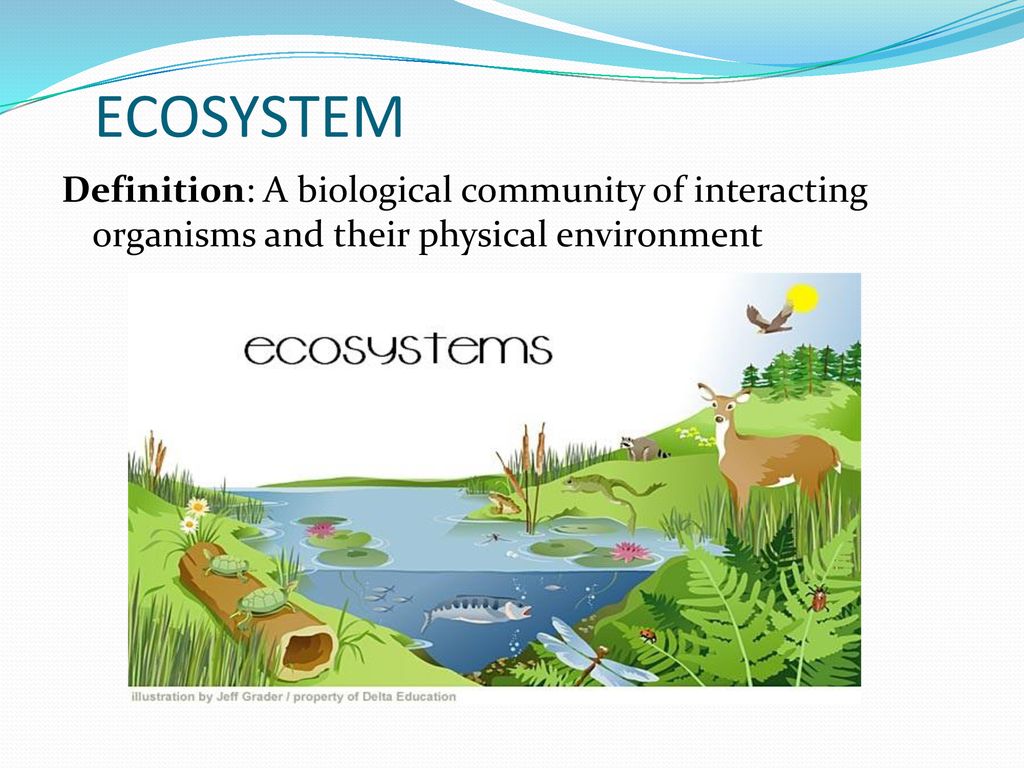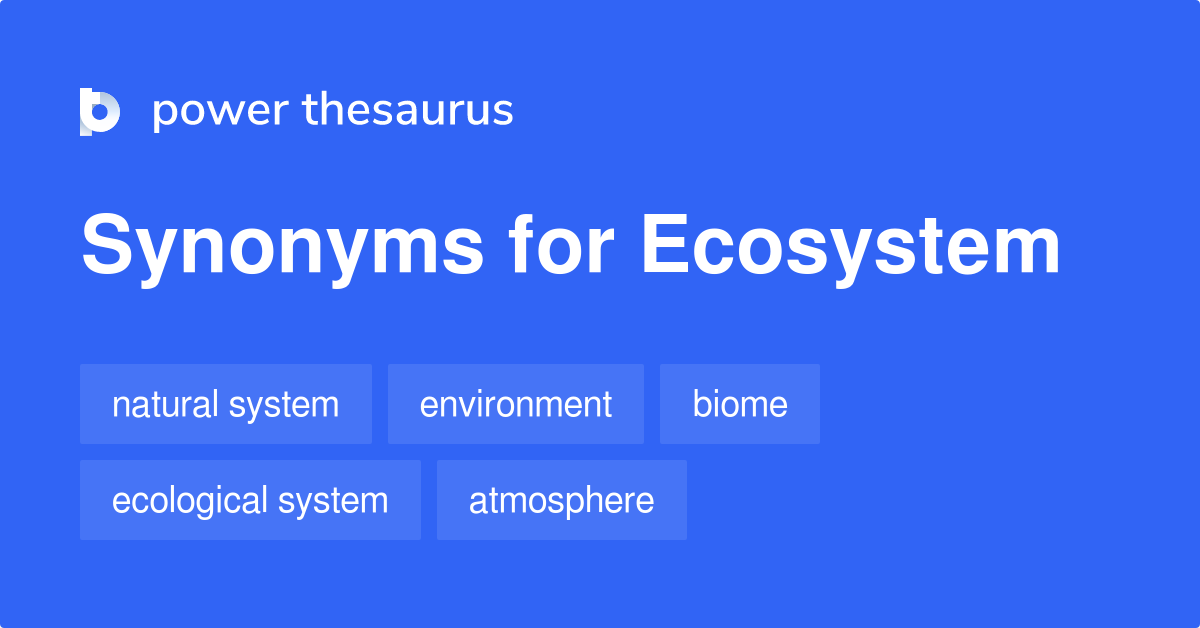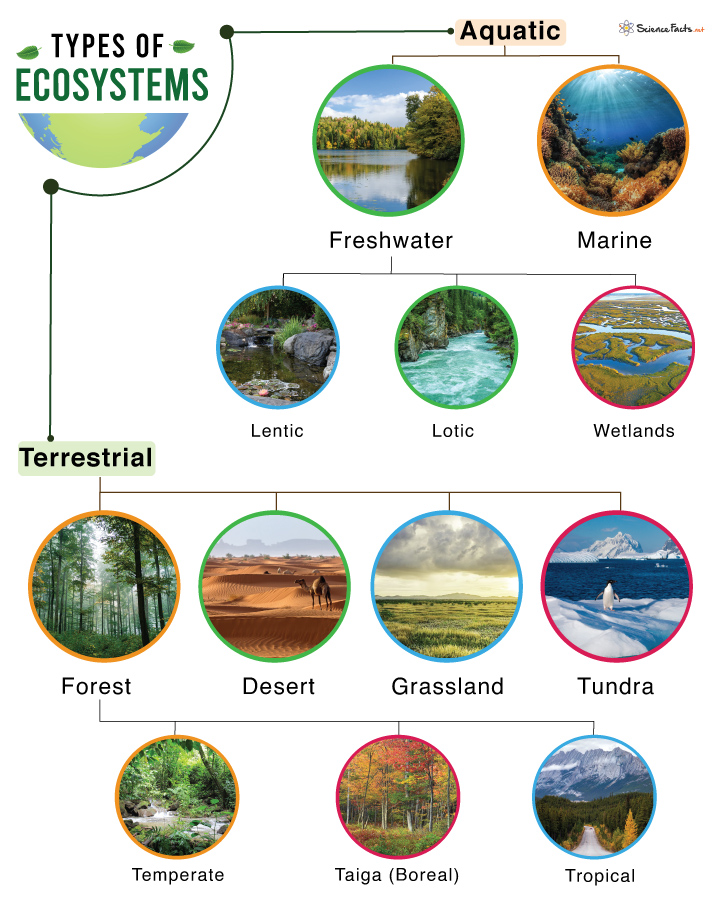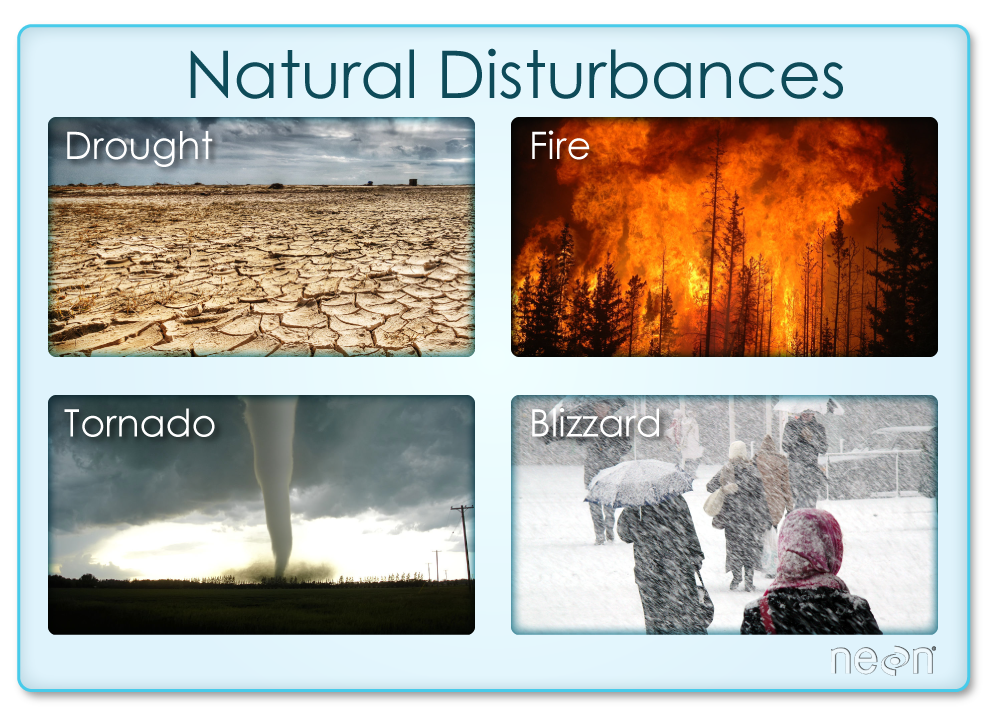Topic definition ecosystem biology: Explore the essence of ecosystem biology, diving into the intricate relationships and processes that sustain life on Earth.
Table of Content
- What is the definition of an ecosystem in biology?
- Understanding Ecosystems in Biology
- Key Components of Ecosystems: Biotic and Abiotic Factors
- Different Types of Ecosystems: Terrestrial and Aquatic
- The Role of Energy Flow and Nutrient Cycles in Ecosystems
- Ecosystem Services and Their Importance to Humans
- YOUTUBE: What Is an Ecosystem?
- Threats to Ecosystems and Conservation Efforts
- Case Studies: Examples of Ecosystems Around the World
- Emerging Research in Ecosystem Biology
What is the definition of an ecosystem in biology?
An ecosystem is a term used in biology to describe a complex system consisting of various living organisms, their physical environment, and the interactions between them.
Here are the key elements/features of an ecosystem:
- Living organisms: Ecosystems include plants, animals, microorganisms, and all other organisms present in a particular area.
- Physical environment: This refers to the non-living components of an ecosystem such as air, water, soil, and sunlight.
- Interactions: Ecosystems are characterized by the interactions and relationships between living organisms and their environment. These interactions can be between organisms of the same species (intraspecific) or different species (interspecific).
- Energy flow: Ecosystems involve the flow of energy through food chains and food webs. Producers (plants) convert sunlight into energy through photosynthesis, and this energy is then transferred through different trophic levels as organisms consume each other.
- Nutrient cycling: Ecosystems have nutrient cycles where elements like carbon, nitrogen, and phosphorus are recycled and reused by different organisms through processes like decomposition and uptake.
- Stability and balance: Ecosystems tend to maintain a balance and equilibrium through various ecological processes and feedback mechanisms.
Ecosystems can vary greatly in size, from a small pond to a vast rainforest, and they play a crucial role in maintaining the overall health and functioning of the planet.
READ MORE:
Understanding Ecosystems in Biology
An ecosystem in biology encompasses the dynamic interplay between living organisms and their physical environment. It is a foundational concept that sheds light on how life forms interact with each other and with their surroundings, forming a complex, self-regulating network.
- Components: Ecosystems consist of biotic (living) and abiotic (non-living) elements, intricately linked through nutrient cycles and energy flows.
- Interactions: These components interact in various ways, such as predator-prey relationships, symbiosis, and competition, which maintain the ecosystem"s balance.
- Scale: Ecosystems can vary in size from a small puddle to an entire forest or ocean, each with unique characteristics and dynamics.
- Function: They perform essential services like carbon sequestration, water filtration, and pollination, crucial for the survival of life on Earth.
- Human Impact: Understanding ecosystems is vital for assessing human impacts on the environment and devising sustainable management practices.
By delving into the mechanisms of ecosystems, we gain insights into the resilience and vulnerability of our natural world, paving the way for informed conservation efforts.

Key Components of Ecosystems: Biotic and Abiotic Factors
Ecosystems are intricate networks where life thrives through a delicate balance between living (biotic) and non-living (abiotic) components. Each plays a pivotal role in ecosystem functionality and sustainability.
- Biotic Factors: These are the living elements of an ecosystem, including plants, animals, fungi, and microorganisms. Their interactions, such as competition, predation, and symbiosis, significantly influence the structure and function of ecosystems.
- Abiotic Factors: These encompass the non-living physical and chemical elements like climate, water, soil, and minerals. Abiotic factors dictate the living conditions for biotic components, influencing their growth, reproduction, and survival.
The interplay between biotic and abiotic factors determines the health and productivity of ecosystems. For instance, sunlight (an abiotic factor) drives photosynthesis in plants (a biotic factor), which in turn supports herbivores, and so on up the food chain. Similarly, soil quality (abiotic) can affect plant health (biotic), which impacts the entire ecosystem.
Understanding these components and their interactions is crucial for preserving ecosystems and their services, which are indispensable for life on Earth.
Different Types of Ecosystems: Terrestrial and Aquatic
Ecosystems on Earth are broadly categorized into terrestrial and aquatic types, each hosting diverse forms of life and unique environmental conditions.
- Terrestrial Ecosystems: These ecosystems are found on land and vary greatly depending on climate, soil type, and altitude. Key examples include:
- Forests: Ranging from tropical rainforests to boreal forests, these ecosystems are characterized by a dense canopy of trees and rich biodiversity.
- Deserts: Known for their arid conditions, extreme temperatures, and sparse vegetation, deserts are home to specially adapted plants and animals.
- Grasslands: Dominated by grasses and occasional trees or shrubs, grasslands, including savannas and prairies, support a variety of herbivores and predators.
- Mountain Ecosystems: Characterized by steep gradients in altitude, temperature, and vegetation, mountain ecosystems offer diverse habitats at different elevations.
- Aquatic Ecosystems: These ecosystems cover water bodies and are classified based on salinity into freshwater and marine ecosystems.
- Freshwater Ecosystems: Including rivers, lakes, and wetlands, these ecosystems have low salt content and support a wide range of plant and animal life.
- Marine Ecosystems: Encompassing oceans, seas, and coral reefs, marine ecosystems are characterized by high salt content and host a vast array of life forms, from microscopic plankton to large marine mammals.
Both terrestrial and aquatic ecosystems are integral to Earth"s biosphere, providing essential services such as oxygen production, climate regulation, and habitats for wildlife.

The Role of Energy Flow and Nutrient Cycles in Ecosystems
The sustainability of ecosystems relies heavily on the continuous flow of energy and the recycling of nutrients, essential processes that underpin all life forms.
- Energy Flow: Energy enters ecosystems primarily through sunlight, which is harnessed by producers (mainly green plants) through photosynthesis. This energy is then transferred through the food chain, from primary consumers (herbivores) to secondary and tertiary consumers (carnivores and omnivores), with energy being lost as heat at each trophic level.
- Nutrient Cycles: Nutrients like carbon, nitrogen, and phosphorus cycle through ecosystems, moving between the biotic and abiotic components. These cycles involve processes such as decomposition, which breaks down organic matter, returning nutrients to the soil for reuse by plants.
Examples of crucial nutrient cycles include:
- Carbon Cycle: Carbon is exchanged among the biosphere, pedosphere, geosphere, hydrosphere, and atmosphere of the Earth, playing a key role in regulating the Earth"s climate.
- Nitrogen Cycle: Nitrogen transitions through various forms and compartments in the ecosystem, critical for synthesizing amino acids in living organisms.
- Water Cycle: Water circulates between the Earth"s surface and the atmosphere through evaporation, condensation, precipitation, and runoff, essential for sustaining life.
Understanding these processes is vital for appreciating how ecosystems function and for managing natural resources sustainably.
Ecosystem Services and Their Importance to Humans
Ecosystems provide a suite of services that are indispensable to human well-being, health, and survival. These services are broadly categorized into provisioning, regulating, supporting, and cultural services.
- Provisioning Services: These include the direct products obtained from ecosystems, such as food, fresh water, timber, fiber, and genetic resources.
- Regulating Services: Ecosystems regulate critical environmental processes and life-support systems, including air quality maintenance, climate regulation through carbon storage and sequestration, waste decomposition, water purification, and disease regulation.
- Supporting Services: These are the natural processes that maintain other ecosystem services, including soil formation, photosynthesis, nutrient cycling, and the provision of habitats that support biodiversity.
- Cultural Services: Natural environments also contribute to human culture and provide recreational, aesthetic, spiritual, and educational benefits, enhancing mental and physical health.
The recognition and valuation of these ecosystem services highlight the critical need to protect and sustainably manage natural ecosystems to ensure these benefits continue for future generations.

What Is an Ecosystem?
Discover the marvels of the ecosystem as you dive into a mesmerizing world of intricate connections and delicate balance. Witness the immense diversity and interdependence of plants, animals, and their environments in this captivating video that will leave you in awe of the wonders of nature.
Ecosystem Definition and Example in Biology
Immerse yourself in the captivating world of biology as you unravel the mysteries of life. From the intricacies of DNA to the fascinating cycles of evolution, this video will take you on an exhilarating journey through the fascinating realm of biology. Get ready to be amazed by the complexity and beauty of the natural world.
Threats to Ecosystems and Conservation Efforts
Ecosystems worldwide face numerous threats that can lead to loss of biodiversity and degradation of natural services. Recognizing these threats is the first step towards effective conservation and restoration efforts.
- Habitat Destruction: Land use changes for agriculture, urban development, and deforestation significantly reduce habitats for many species, leading to loss of biodiversity.
- Pollution: Air, water, and soil pollution from industrial activities, agricultural runoff, and waste disposal can severely impact ecosystems" health and productivity.
- Climate Change: Global warming and climate variability affect weather patterns, sea levels, and the distribution of species, posing a significant threat to ecosystems.
- Invasive Species: Non-native species can outcompete, prey on, or bring diseases to native species, disrupting ecosystems" balance.
- Overexploitation: Unsustainable harvesting of resources, such as overfishing and excessive logging, can deplete natural resources beyond recovery.
In response, conservation efforts are being intensified globally, including:
- Protected Areas: Establishing national parks, wildlife reserves, and marine protected areas to conserve critical habitats.
- Restoration Projects: Rehabilitating degraded ecosystems through reforestation, wetland restoration, and coral reef protection initiatives.
- Legislation and Policies: Enacting environmental laws and international agreements to reduce pollution, combat climate change, and protect endangered species.
- Community Involvement: Engaging local communities in conservation efforts to ensure sustainable management of natural resources.
- Scientific Research: Conducting research to better understand ecosystems, which informs conservation strategies and practices.
Collective action across global, national, and local levels is crucial to mitigate these threats and ensure the preservation of ecosystems for future generations.
Case Studies: Examples of Ecosystems Around the World
The diversity of ecosystems around the globe highlights the complexity and beauty of the natural world. Here, we explore a few notable examples, each showcasing unique ecological dynamics and conservation challenges.
- The Amazon Rainforest: Often referred to as the "lungs of the Earth," this vast tropical forest spans several countries in South America. It is renowned for its incredible biodiversity, including millions of species of plants, animals, and insects, many of which are still undocumented.
- The Great Barrier Reef: Located off the coast of Queensland, Australia, this is the world"s largest coral reef system. It supports a wide range of marine life and is recognized for its vibrant coral diversity.
- The Serengeti Plains: Stretching across Tanzania and Kenya, the Serengeti ecosystem is famous for its annual wildebeest migration, one of the most spectacular natural events on the planet. It supports a vast array of wildlife, including lions, elephants, and rhinos.
- The Arctic Tundra: Characterized by cold temperatures, permafrost, and minimal vegetation, the Arctic tundra spans across northern parts of Canada, Russia, and Scandinavia. It is home to species well-adapted to extreme conditions, such as polar bears and Arctic foxes.
- The Sundarbans Mangrove Forest: Situated at the delta of the Ganges, Brahmaputra, and Meghna rivers on the Bay of Bengal, this forest is the largest tidal halophytic mangrove forest in the world. It is critical for protecting inland areas from storm surges and providing habitat for the Bengal tiger.
These case studies illustrate the range of ecosystems that exist and underscore the importance of global conservation efforts to protect these invaluable natural treasures.

READ MORE:
Emerging Research in Ecosystem Biology
The field of ecosystem biology is rapidly advancing, with new research shedding light on the intricate connections that sustain life on Earth. Here are some of the cutting-edge topics and methodologies shaping the future of this vital scientific discipline.
- Climate Change Impacts: Studies are increasingly focusing on how global warming affects ecosystem structure, function, and biodiversity. Researchers are examining shifts in species distributions, alterations in phenological events, and changes in ecosystem productivity.
- Genomic Approaches: Advances in genomics and bioinformatics are enabling scientists to study the genetic diversity within and among species in ecosystems. This research helps in understanding how biodiversity contributes to ecosystem resilience and function.
- Ecosystem Services Valuation: Efforts are underway to better quantify the economic value of ecosystem services. This research is crucial for integrating ecological health into policy and decision-making processes.
- Restoration Ecology: As the degradation of ecosystems becomes a global concern, research into restoration techniques and their effectiveness is expanding. This includes reforestation, wetlands restoration, and coral reef rehabilitation, among others.
- Remote Sensing and Big Data: The use of satellite imagery, drones, and other remote sensing technologies, combined with big data analytics, is revolutionizing our ability to monitor and understand ecosystems at a global scale.
These research endeavors are essential for developing strategies to preserve biodiversity, combat climate change, and sustain the planet"s ecological balance for future generations.
Embracing the complexity of ecosystems enriches our understanding of biology and underscores the imperative to safeguard our planet"s intricate web of life.






